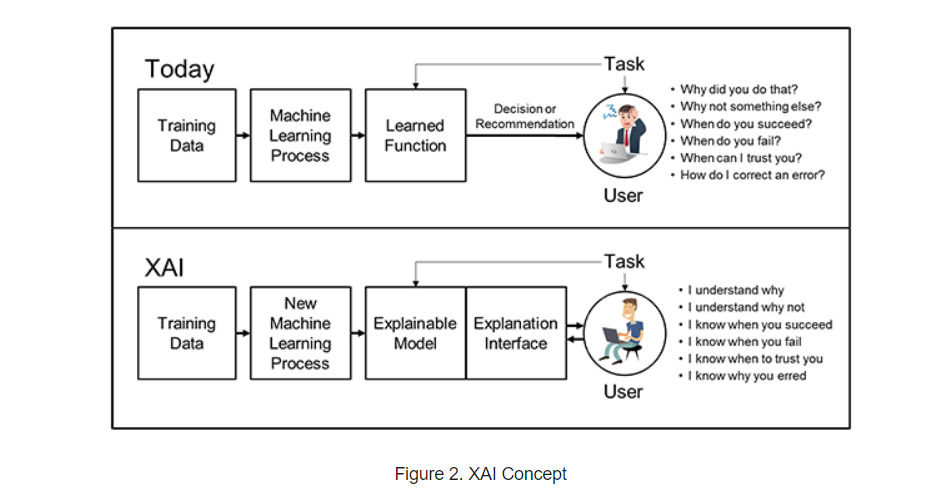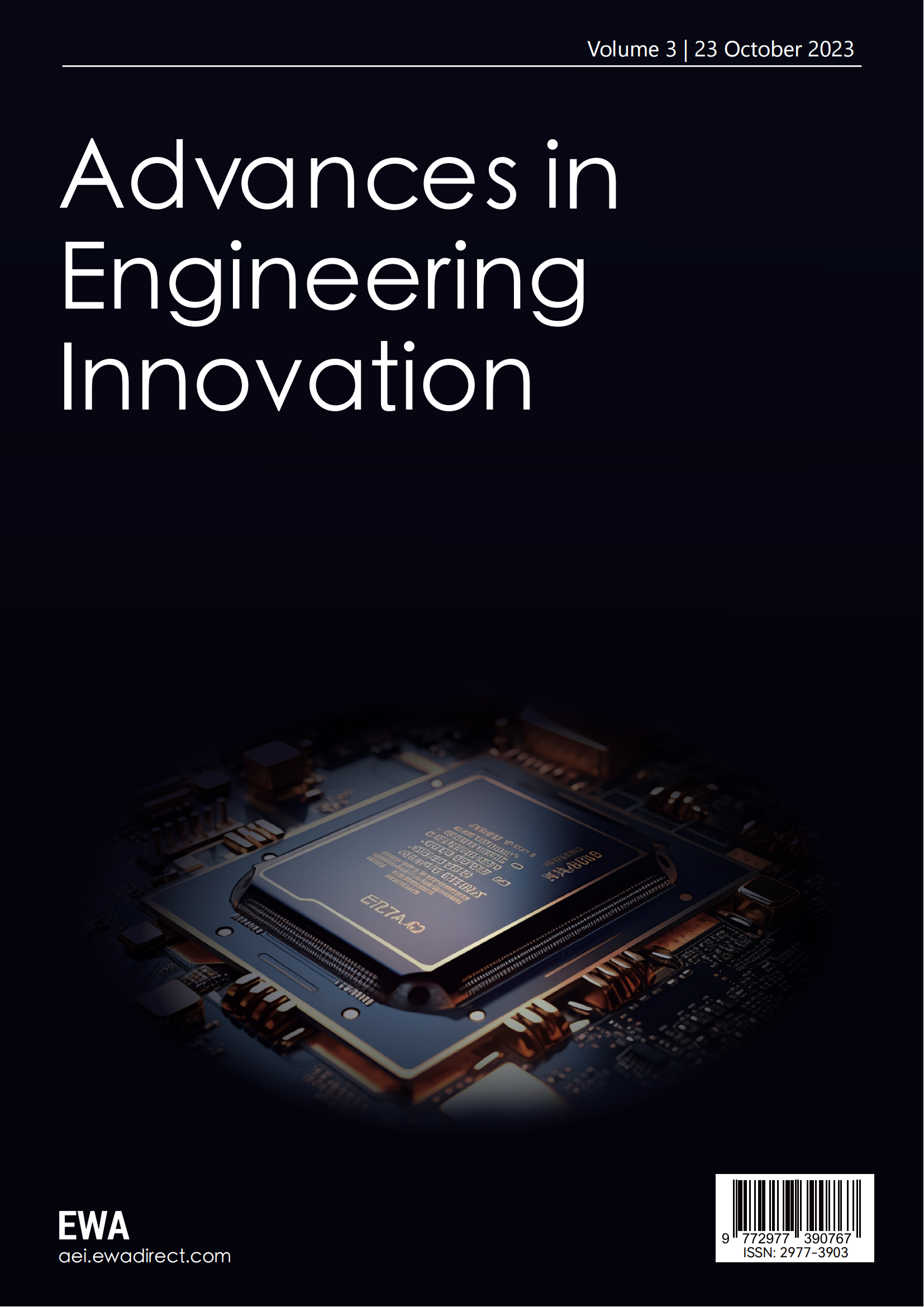1. Introduction: The emergence and need for explainable AI
Artificial Intelligence (AI), with its profound advancements in the 21st century, has become an indispensable tool across various sectors, from diagnosing diseases to shaping financial strategies (Russell & Norvig, 2020). As these AI models, particularly deep learning, continue to achieve state-of-the-art performance, there arises a consequential trade-off: increased accuracy at the expense of interpretability (Goodfellow, Bengio, & Courville, 2016). The so-called "black-box" nature of these intricate models, where input-output relationships aren't easily decipherable, can lead to distrust, impede model debugging, and even raise ethical concerns, especially when misjudgments occur (Zhang et al., 2018). As we tread further into an AI-driven era, there is an imperative call for transparency and accountability in these models. This foregrounds the emergence of Explainable AI (XAI), a subfield dedicated to bridging the gap between machine intelligence and human comprehensibility (Arrieta et al., 2020). This paper endeavors to navigate the realms of XAI, its underpinnings, challenges, and future trajectories.
2. Related work: Unveiling the black box
Historically, AI models were symbolic, making their inner workings transparent. However, the advent of data-driven models, emphasizing complex structures like neural networks, veered away from this clarity in pursuit of accuracy (Pearl, 2018). Recognizing the interpretability void, Ribeiro et al. (2016) devised LIME, a groundbreaking method to elucidate any machine learning model's predictions. Following suit, Lundberg and Lee's SHAP (2017) anchored its explanations in game theory, providing a unified framework for interpretability. Concurrently, researchers ventured into creating models intrinsically designed for transparency, like interpretable decision sets (Lakkaraju et al., 2016) and transparent decision trees (Lou, Caruana, & Gehrke, 2012).
The ethical dimensions of AI transparency were underscored by Selbst and Barocas (2018), emphasizing the sociotechnical essence of model explanations. Miller (2019) posited that explanations must cater to humans' cognitive capabilities, propelling research into human-centric XAI. Recent explorations also gauge the fidelity and consistency of explanations, ensuring they truly mirror a model's operations (Yeh, Kim, Yen, & Ravikumar, 2019).

Figure 1. XAI concept
3. Methodology: Assessing the dimensions of XAI techniques
The overarching objective of this study is to critically evaluate XAI techniques in terms of their effectiveness, human comprehensibility, and robustness.
3.1 Technique selection:
Prominent model-agnostic techniques, such as LIME and SHAP, were selected alongside inherently transparent models like decision sets (Chen, Li, & Gogate, 2018).
3.2 Dataset incorporation:
For a comprehensive evaluation, datasets representing images (CIFAR-10), texts (IMDb reviews), and structured data (UCI Adult dataset) were utilized (Krizhevsky & Hinton, 2009; Maas et al., 2011; Dua & Graff, 2017).
3.3 Evaluation metrics:
3.3.1 Effectiveness: Determined by the correlation between explanations and ground truth (Ras, van Gerven, & Haselager, 2018).
3.3.2 Comprehensibility: Human-participant surveys assessed the clarity of explanations (Carvalho et al., 2019).
3.3.3 Robustness: Sensitivity analysis was conducted to ensure consistency in explanations under data perturbations (Alvarez-Melis & Jaakkola, 2018).
3.4. Implementation details:
Methods were implemented using Python, capitalizing on libraries such as SHAP and LIME.
4. Results
Our exploration divulged that SHAP consistently outperformed in explaining intricate models across all datasets. LIME demonstrated adeptness in image data, while decision sets exhibited unparalleled clarity, albeit at a slight accuracy compromise. Notably, human participants favored decision sets for transparency but leaned towards SHAP for cohesive understanding across models.
5. Conclusion and future research directions
The voyage into XAI underscores a pivotal paradigm shift in AI: achieving models that harmonize performance with interpretability. This study reaffirms the viability of SHAP and LIME in elucidating complex models, albeit with distinctive strengths. As AI's dominion expands, its interpretability becomes non-negotiable. Future endeavors should focus on domain-specific XAI techniques, dynamically adaptive explanations based on user expertise, and methodologies ensuring explanations genuinely mirror model operations (Doshi-Velez & Kim, 2020)
References
[1]. Russell, S. J., & Norvig, P. (2020). Artificial intelligence: A modern approach. Malaysia; Pearson Education Limited.
[2]. Goodfellow, I., Bengio, Y., & Courville, A. (2016). Deep learning. MIT press.
[3]. Zhang, Q., Yang, Y., Ma, H., & Yoshihira, K. (2018). Interpreting deep learning models—a survey. Wiley Interdisciplinary Reviews: Data Mining and Knowledge Discovery, 8(6), e1340.
[4]. Arrieta, A. B., Díaz-Rodríguez, N., Del Ser, J., Bennetot, A., Tabik, S., Barbado, A., ... & Herrera, F. (2020). Explainable Artificial Intelligence (XAI): Concepts, taxonomies, opportunities, and challenges toward responsible AI. Information Fusion, 58, 82-115.
[5]. Pearl, J. (2018). Theoretical impediments to machine learning with seven sparks from the causal revolution.
[6]. Ribeiro, M. T., Singh, S., & Guestrin, C. (2016). "Why should I trust you?" Explaining the predictions of any classifier. In Proceedings of the 22nd ACM SIGKDD international conference on knowledge discovery and data mining (pp. 1135-1144).
[7]. Lundberg, S. M., & Lee, S. I. (2017). A unified approach to interpreting model predictions. In Advances in neural information processing systems (pp. 4765-4774).
[8]. Lakkaraju, H., Bach, S. H., & Leskovec, J. (2016). Interpretable decision sets: A joint framework for description and prediction. In Proceedings of the 22nd ACM SIGKDD international conference on knowledge discovery and data mining (pp. 1675-1684).
[9]. Lou, Y., Caruana, R., & Gehrke, J. (2012). Intelligible models for classification and regression. In Proceedings of the 18th ACM SIGKDD international conference on Knowledge discovery and data mining (pp. 150-158).
[10]. Selbst, A. D., & Barocas, S. (2018). The intuitive appeal of explainable machines. Fordham L. Rev., 87, 1085.
[11]. Miller, T. (2019). Explanation in artificial intelligence: Insights from the social sciences. Artificial Intelligence, 267, 1-38.
[12]. Yeh, C. K., Kim, J., Yen, I. E., & Ravikumar, P. (2019). Representer point selection for explaining deep neural networks. In Advances in Neural Information Processing Systems (pp. 9235-9245).
[13]. Chen, J., Li, L., & Gogate, P. (2018). Learning interpretable deep state space models for probabilistic time series forecasting. In Advances in Neural Information Processing Systems (pp. 10810-10820).
[14]. Krizhevsky, A., & Hinton, G. (2009). Learning multiple layers of features from tiny images. Tech Report.
[15]. Maas, A. L., Daly, R. E., Pham, P. T., Huang, D., Ng, A. Y., & Potts, C. (2011). Learning word vectors for sentiment analysis. In Proceedings of the 49th annual meeting of the association for computational linguistics: Human language technologies (pp. 142-150).
[16]. Dua, D., & Graff, C. (2017). UCI Machine Learning Repository.
[17]. Ras, G., van Gerven, M., & Haselager, P. (2018). Explanation methods in deep learning: Users, values, concerns and challenges. In Explainable and interpretable models in computer vision and machine learning (pp. 19-36). Springer.
[18]. Carvalho, D. V., Pereira, E. M., & Cardoso, J. S. (2019). Machine learning interpretability: A survey on methods and metrics. Electronics, 8(8), 832.
[19]. Alvarez-Melis, D., & Jaakkola, T. S. (2018). A causal framework for explaining the predictions of black-box sequence-to-sequence models. In Proceedings of the 2018 Conference on Empirical Methods in Natural Language Processing (pp. 4124-4133).
[20]. Doshi-Velez, F., & Kim, B. (2020). Considerations for evaluation and generalization in interpretable machine learning. In Explainable AI: Interpreting, Explaining and Visualizing Deep Learning (pp. 3-17). Springer.
Cite this article
Chia,H.L.B. (2023). The emergence and need for explainable AI. Advances in Engineering Innovation,3,1-4.
Data availability
The datasets used and/or analyzed during the current study will be available from the authors upon reasonable request.
Disclaimer/Publisher's Note
The statements, opinions and data contained in all publications are solely those of the individual author(s) and contributor(s) and not of EWA Publishing and/or the editor(s). EWA Publishing and/or the editor(s) disclaim responsibility for any injury to people or property resulting from any ideas, methods, instructions or products referred to in the content.
About volume
Journal:Advances in Engineering Innovation
© 2024 by the author(s). Licensee EWA Publishing, Oxford, UK. This article is an open access article distributed under the terms and
conditions of the Creative Commons Attribution (CC BY) license. Authors who
publish this series agree to the following terms:
1. Authors retain copyright and grant the series right of first publication with the work simultaneously licensed under a Creative Commons
Attribution License that allows others to share the work with an acknowledgment of the work's authorship and initial publication in this
series.
2. Authors are able to enter into separate, additional contractual arrangements for the non-exclusive distribution of the series's published
version of the work (e.g., post it to an institutional repository or publish it in a book), with an acknowledgment of its initial
publication in this series.
3. Authors are permitted and encouraged to post their work online (e.g., in institutional repositories or on their website) prior to and
during the submission process, as it can lead to productive exchanges, as well as earlier and greater citation of published work (See
Open access policy for details).
References
[1]. Russell, S. J., & Norvig, P. (2020). Artificial intelligence: A modern approach. Malaysia; Pearson Education Limited.
[2]. Goodfellow, I., Bengio, Y., & Courville, A. (2016). Deep learning. MIT press.
[3]. Zhang, Q., Yang, Y., Ma, H., & Yoshihira, K. (2018). Interpreting deep learning models—a survey. Wiley Interdisciplinary Reviews: Data Mining and Knowledge Discovery, 8(6), e1340.
[4]. Arrieta, A. B., Díaz-Rodríguez, N., Del Ser, J., Bennetot, A., Tabik, S., Barbado, A., ... & Herrera, F. (2020). Explainable Artificial Intelligence (XAI): Concepts, taxonomies, opportunities, and challenges toward responsible AI. Information Fusion, 58, 82-115.
[5]. Pearl, J. (2018). Theoretical impediments to machine learning with seven sparks from the causal revolution.
[6]. Ribeiro, M. T., Singh, S., & Guestrin, C. (2016). "Why should I trust you?" Explaining the predictions of any classifier. In Proceedings of the 22nd ACM SIGKDD international conference on knowledge discovery and data mining (pp. 1135-1144).
[7]. Lundberg, S. M., & Lee, S. I. (2017). A unified approach to interpreting model predictions. In Advances in neural information processing systems (pp. 4765-4774).
[8]. Lakkaraju, H., Bach, S. H., & Leskovec, J. (2016). Interpretable decision sets: A joint framework for description and prediction. In Proceedings of the 22nd ACM SIGKDD international conference on knowledge discovery and data mining (pp. 1675-1684).
[9]. Lou, Y., Caruana, R., & Gehrke, J. (2012). Intelligible models for classification and regression. In Proceedings of the 18th ACM SIGKDD international conference on Knowledge discovery and data mining (pp. 150-158).
[10]. Selbst, A. D., & Barocas, S. (2018). The intuitive appeal of explainable machines. Fordham L. Rev., 87, 1085.
[11]. Miller, T. (2019). Explanation in artificial intelligence: Insights from the social sciences. Artificial Intelligence, 267, 1-38.
[12]. Yeh, C. K., Kim, J., Yen, I. E., & Ravikumar, P. (2019). Representer point selection for explaining deep neural networks. In Advances in Neural Information Processing Systems (pp. 9235-9245).
[13]. Chen, J., Li, L., & Gogate, P. (2018). Learning interpretable deep state space models for probabilistic time series forecasting. In Advances in Neural Information Processing Systems (pp. 10810-10820).
[14]. Krizhevsky, A., & Hinton, G. (2009). Learning multiple layers of features from tiny images. Tech Report.
[15]. Maas, A. L., Daly, R. E., Pham, P. T., Huang, D., Ng, A. Y., & Potts, C. (2011). Learning word vectors for sentiment analysis. In Proceedings of the 49th annual meeting of the association for computational linguistics: Human language technologies (pp. 142-150).
[16]. Dua, D., & Graff, C. (2017). UCI Machine Learning Repository.
[17]. Ras, G., van Gerven, M., & Haselager, P. (2018). Explanation methods in deep learning: Users, values, concerns and challenges. In Explainable and interpretable models in computer vision and machine learning (pp. 19-36). Springer.
[18]. Carvalho, D. V., Pereira, E. M., & Cardoso, J. S. (2019). Machine learning interpretability: A survey on methods and metrics. Electronics, 8(8), 832.
[19]. Alvarez-Melis, D., & Jaakkola, T. S. (2018). A causal framework for explaining the predictions of black-box sequence-to-sequence models. In Proceedings of the 2018 Conference on Empirical Methods in Natural Language Processing (pp. 4124-4133).
[20]. Doshi-Velez, F., & Kim, B. (2020). Considerations for evaluation and generalization in interpretable machine learning. In Explainable AI: Interpreting, Explaining and Visualizing Deep Learning (pp. 3-17). Springer.









